Unmanned ground systems to multitask for Chinese army
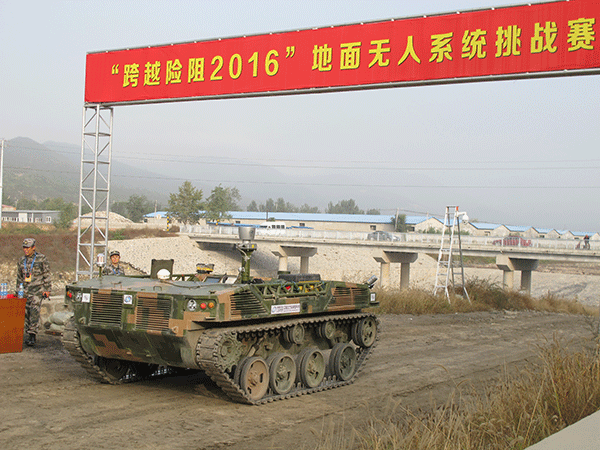 |
|
The final challenge is held in Fangshan district, Beijing, China on October 17, 2016. [Photo by Chen Liubing/chinadaily.com.cn] |
Unmanned ground systems have been widely applied in multiple military tasks in modern China, including logistics transportation in snow-covered plateaus, anti-terrorism campaigns in the city, post-disaster relief efforts, and strategic investigations under complicated geographic conditions. With a broad application in the military field, unmanned ground systems will profoundly change future military operations, and thus remaining at the strategic forefront of equipment development among the Chinese ground force.
To fulfill the technology demand in executing multiple tasks, the PLA Ground Force Equipment Department organized the unmanned ground system final challenge on October 17in Fangshan district, Beijing. As the first competition held after the establishment of the Chinese ground force, the competition emphasized military demands, while also designing the challenge subjects, and will lead the technology development of unmanned ground systems into the future.
Seventy-three competition fleets from 44 universities, institutions and private companies attended the preliminary contest held in Northeast China's Heilongjiang province from September 6-13, with 22 of them advancing to the final.
The final challenge, held in a real field environment, included wild battlefield task execution, city battlefield search and investigation, and highland transportation, with fleets divided into five groups (A-E) based on platform, tonnage, function and structure.
To wherever men cannot reach, do whatever men cannot do: Robot dog
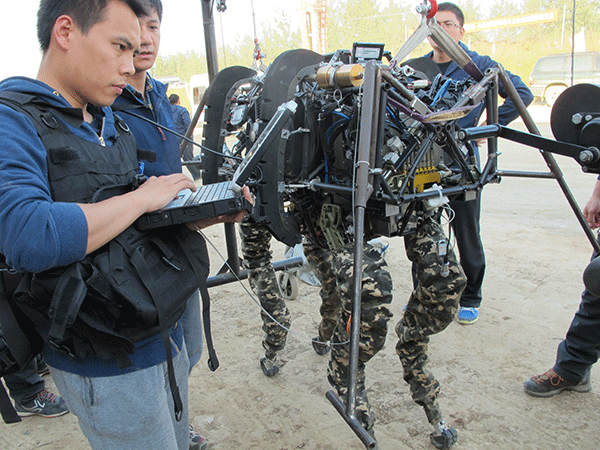 |
|
A foot joint robot (robot dog) from the China North Vehicle Research Institute. [Photo by Chen Liubing/chinadaily.com.cn] |
The foot joint robot, or robot dog, designed by the China North Vehicle Research Institute won group D, the bionic platform highland transportation competition.
As an R&D center of special-purpose vehicles and unmanned ground systems, the institute is in charge of the research, development and industrialization of unmanned ground systems for the military. Su Bo, deputy director of the institute's unmanned ground system enter, was pleased with the result.
The center started the robot dog R&D in 2011, and has planned a series of products, according to Su. "This robot dog is among the first batch of the products, and is also the prototype to testify the technology," Su said. "We plan to produce larger and smaller machineries in the next step, for example, the robot yak and robot goat, which can be used in transportation and investigation under tough geological conditions respectively."
The robot dog can carry out multiple tasks with relevant modules, and 10 robot dogs can become storm troopers if equipped with weapons. The center has provided more than 20 options to the military to develop the robot dogs as mortars and investigative equipment.
"Complicated and extreme terrains are the best battlefields for machineries," Su said. For one thing, robots can replace humans to avoid unnecessary casualties, for another, they can perform tasks at places beyond men's touch. "And our ideal is to build China's MechWarrior," Su said.
The center's robot dogs can also investigate at the field independently, and perform transportation, escort and support tasks with human instructions. "Soldiers in snow-covered regions usually transport logistics with yaks and donkeys; however, plagues, food shortage, and halt out of terrorism always affect the transportation efficiency. Robot dogs, on the other hand, can travel freely through highland, gobi, desert, and cities," Su said.
Besides the technology level, robot dogs can also frighten the enemies during military tasks such as anti-terrorism campaigns. "Terrorists always hide in buildings while our troops patrol on the street without any covers. Now we have this ironed robot dogs with body armors, which would be a totally different story," Su said.
The Chinese unmanned system academia experts work station, as well as the China, Russia, Germany and Finland robot association, have backed the institute's research. "The basic theory and technology of our robot dogs have made breakthroughs, and are quite close to the released US standards," Su said. The director hopes the robot dogs can be applied to the military soon.
Technical "Waterloo"
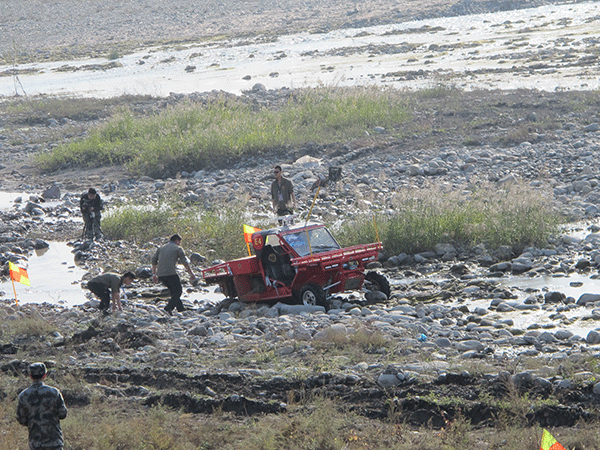 |
|
Vehicle of North Guangwei Technology Inc. gets stuck in the mud. [Photo by Chen Liubing/chinadaily.com.cn] |
Many teams encountered "waterloo" during the competition, given the tough and complex terrains. The group E competition, with participants including 4x4 and 6x6 all-terrain vehicles, mainly tested the passage capacity of vehicles in complex road conditions. The North Guangwei Technology Inc.'s vehicle got stuck in the mud as its rear right tire was cut flat by a piece of stone. Team members spent more than half an hour lifting the vehicle out of the mud, which greatly affected its final result. "We did not try the mud road during the preliminary contest, and got stuck into the mud this time. We will change the driving system into all-wheel drive to avoid such predicament next time," said the company's electric and full-vehicle engineer.
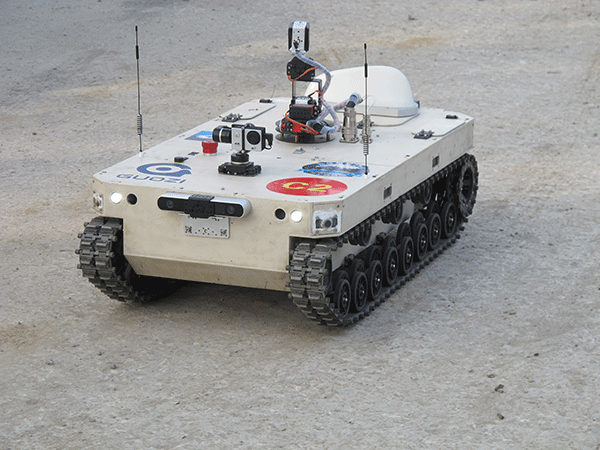 |
|
Vehicle of Zhejiang Supcon Research Co., Ltd. [Photo by Chen Liubing/chinadaily.com.cn] |
The Zhejiang Supcon Research Co., Ltd.'s vehicle also failed the competition by missing all hidden hazardous goods, due to signal failures. As a human-machine interaction challenge, the target of the group C competition was to test the mobility, search, and anti-jamming capabilities of the vehicles by detecting hidden goods under remote control.
According to Liu Lisheng, a researcher at the company, the vehicle signals failed because of the long distance and roadblocks, such as concrete and containers, which did not show up during the preliminary contest. "Our major job at work is to produce intelligent patrol robots, which can replace human beings in transformer substation patrol during summer," Liu said. "Our routine paths are smoother city roads, and it is our first time to design a machinery for wild battlefield, and I am sure there is large space for improvement."
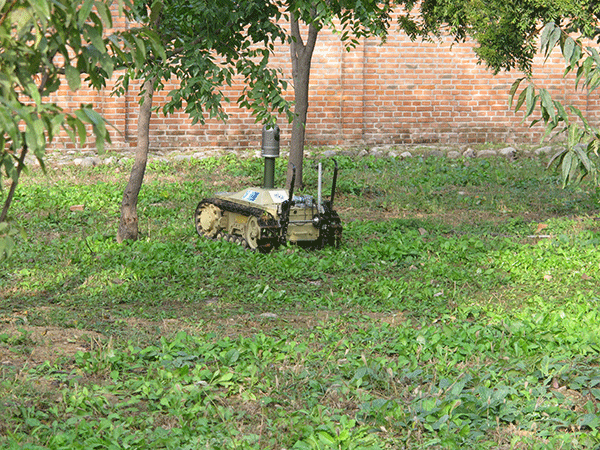 |
|
A vehicle of group C moves during the competition. [Photo by Chen Liubing/chinadaily.com.cn] |
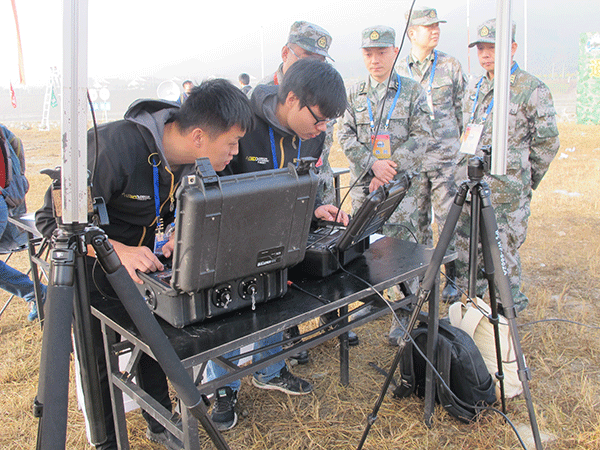 |
|
Member staffs adjust the remote control. [Photo by Chen Liubing/chinadaily.com.cn] |
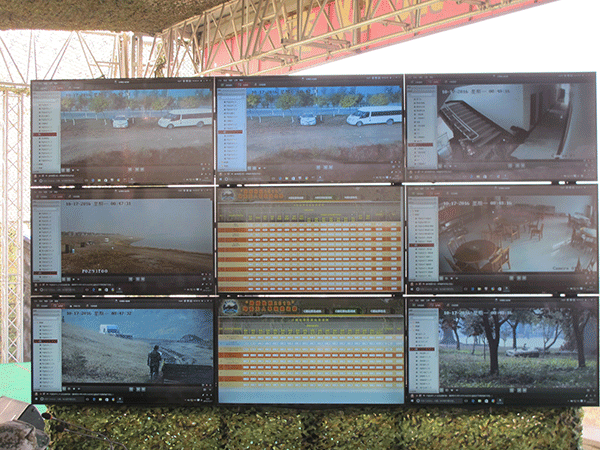 |
|
Monitor and score display screens. [Photo by Chen Liubing/chinadaily.com.cn] |





















